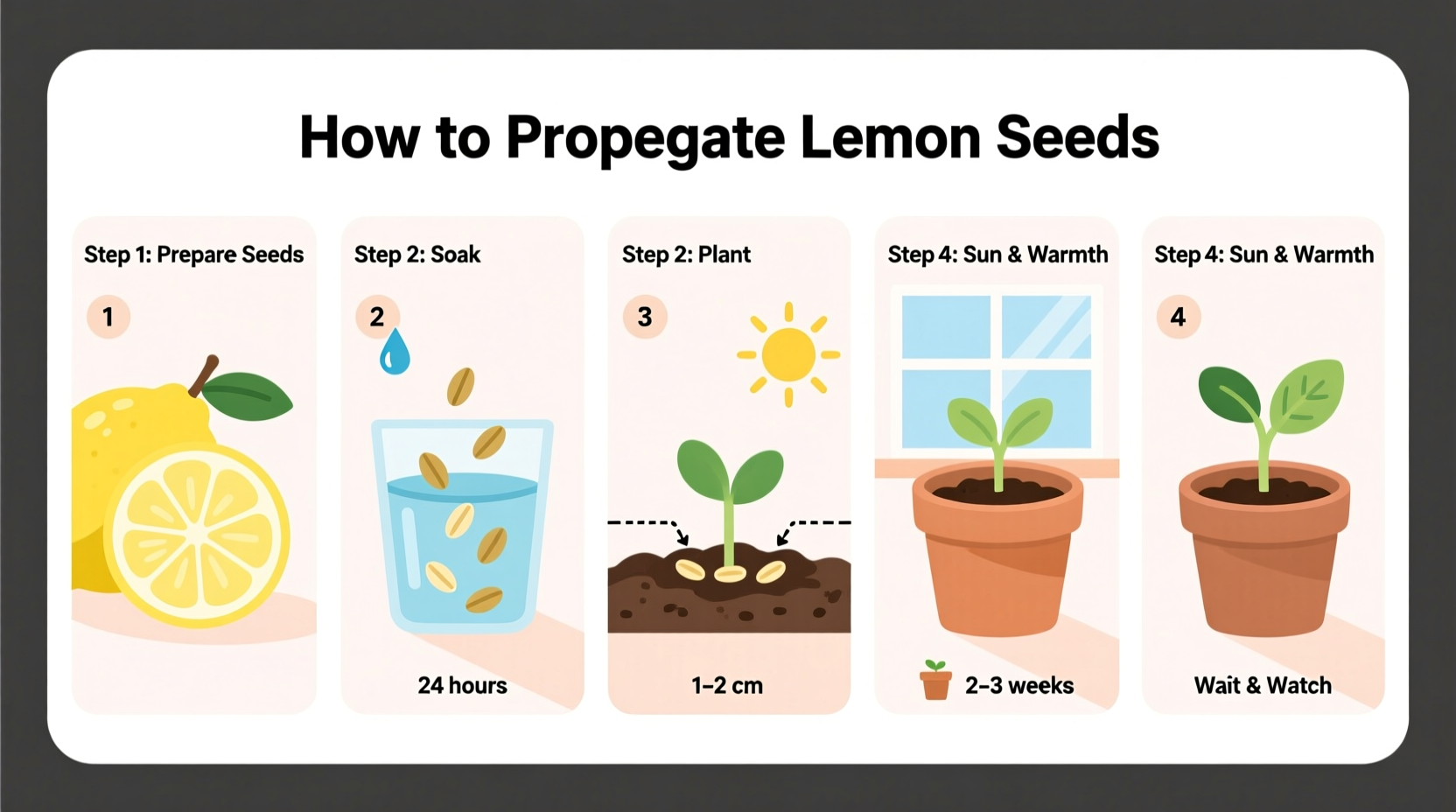Yes, you can propagate lemon seeds, but don't expect identical fruit to the parent tree. Most commercial lemon varieties are grafted, and seed-grown trees typically take 5-15 years to produce fruit that may lack the quality, flavor, or disease resistance of the original. For reliable fruit production, grafting is recommended, but growing from seed works well for rootstock or as an educational project.
Why Grow Lemon Trees from Seed? Setting Realistic Expectations
While propagating lemon seeds is straightforward, understanding the limitations is crucial for successful citrus cultivation. Unlike many fruits, citrus grown from seed rarely produces fruit true to the parent due to genetic variation. According to the University of California Agriculture and Natural Resources, "seedling citrus trees exhibit significant variation from the parent tree, often resulting in inferior fruit quality and extended time to bearing."
However, growing lemon seeds offers valuable benefits:
- Perfect educational project for children learning plant biology
- Ideal for creating disease-resistant rootstock for grafting
- Satisfying hobby for gardeners who enjoy the full growth cycle
- Affordable way to produce multiple trees before selecting the strongest
| Propagation Method | Time to Fruit | Fruit Quality | Tree Characteristics |
|---|---|---|---|
| Seed propagation | 5-15 years | Variable, often inferior | Large, thorny, vigorous |
| Grafting/budding | 2-5 years | True to parent variety | Size controlled by rootstock |
The Complete Step-by-Step Guide to Propagating Lemon Seeds
Step 1: Selecting and Preparing Quality Seeds
Start with fresh seeds from organic, non-hybrid lemons for best germination rates. Conventional grocery store lemons often come from hybrid varieties that produce unpredictable offspring. According to University of Florida IFAS Extension, "freshly extracted citrus seeds maintain highest viability when planted immediately rather than stored."
Follow these seed preparation steps:
- Remove seeds from a ripe lemon
- Gently rinse off all pulp (residual sugars can promote mold)
- Keep seeds moist but don't let them dry out
- Plant within 24 hours for optimal germination
Step 2: Creating the Ideal Germination Environment
Lemon seeds require consistent warmth and moisture to sprout successfully. The ideal temperature range is 70-85°F (21-29°C), with bottom heat significantly improving germination rates. Many gardeners achieve excellent results using the "baggy method" - placing moist seeds between damp paper towels inside a sealed plastic bag.
Alternative planting method:
- Use well-draining seed starting mix (avoid garden soil)
- Plant seeds 1/2 inch deep
- Maintain consistent moisture (not soggy)
- Cover container with plastic wrap to retain humidity
- Place in warm location away from direct sunlight

Step 3: Managing the Germination Timeline
Understanding the germination timeline prevents premature discarding of viable seeds. Unlike many plants, citrus seeds germinate slowly and unpredictably:
- Days 1-7: Initial water absorption and metabolic activation
- Days 7-21: Root emergence (radicle breaks through seed coat)
- Days 21-35: Shoot development and cotyledon emergence
- Months 2-3: First true leaves develop
Patience is essential - some lemon seeds may take up to 6 weeks to show visible growth. The USDA Agricultural Research Service notes that "citrus seed germination is highly variable depending on cultivar, seed maturity, and storage conditions."
Critical Post-Germination Care for Healthy Seedlings
Light Requirements for Young Lemon Trees
Once seedlings emerge, they require bright, indirect light. Direct afternoon sun can scorch tender leaves. Gradually acclimate seedlings to increased light exposure over 2-3 weeks. For optimal growth, provide 12-16 hours of light daily. During winter months or in low-light regions, supplemental grow lights significantly improve growth rates and prevent leggy, weak stems.
Watering and Humidity Management
Maintain consistent soil moisture without waterlogging. The "finger test" works well - water when the top inch of soil feels dry. Lemon seedlings prefer higher humidity (40-50%) than typical household conditions. Simple humidity solutions include:
- Grouping plants together
- Using humidity trays with pebbles and water
- Occasional misting (avoiding prolonged leaf wetness)
Transplanting and Potting Strategy
Transplant seedlings when roots fill the current container or when the plant outgrows its space. Always move to just one size larger pot (typically 2-3 inches wider in diameter). Use well-draining potting mix formulated for citrus or create your own blend with:
- 60% high-quality potting soil
- 30% perlite or pumice
- 10% compost or well-rotted manure
When Seed Propagation Makes Sense (and When It Doesn't)
Understanding the context boundaries for seed propagation prevents wasted effort and disappointment. Seed propagation works best for:
- Educational purposes with children
- Creating rootstock for grafting known varieties
- Developing disease-resistant breeding stock
- Regions with suitable citrus-growing climates
Seed propagation is generally not recommended when:
- You want specific fruit characteristics
- Space is limited (seedling trees grow large)
- You need fruit production within 5 years
- Growing in containers long-term (dwarf varieties better)
Advanced Tips for Serious Citrus Growers
For those committed to growing lemon trees from seed with the best possible outcome:
- Select parent fruit carefully: Choose lemons from trees known for desirable traits
- Grow multiple seedlings: Plant 5-10 seeds to increase chances of superior specimens
- Consider grafting later: Once seedlings reach pencil thickness, graft with budwood from desired varieties
- Implement proper nutrition: Use balanced citrus fertilizer starting at half-strength when first true leaves appear
Remember that patience is essential in citrus cultivation. As noted by horticultural experts at the University of California, "citrus grown from seed requires long-term commitment but offers unique satisfaction in watching a tree develop from its earliest stages."











 浙公网安备
33010002000092号
浙公网安备
33010002000092号 浙B2-20120091-4
浙B2-20120091-4